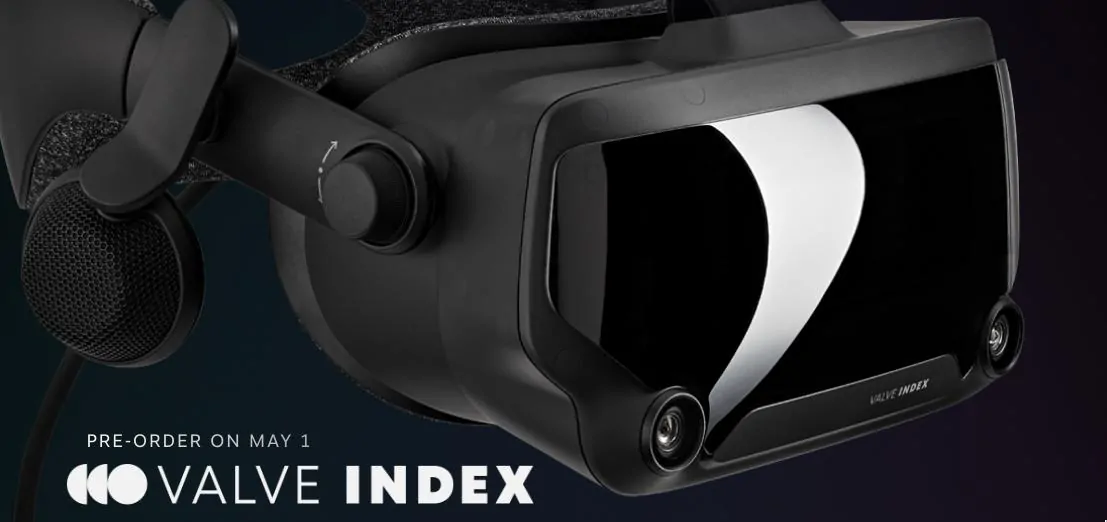Valve’s upcoming Valve Index VR system is getting closer and closer to launch, and now, with a preorder date slated for May 1, the company has fully released all the details on the new system. Sporting a mixed reality capable headset, full finger tracking controllers, and roomscale, all with slightly lower PC requirements than most VR systems out today, the Index sits at $999.00 for the full kit, which includes two SteamVR-compatible base stations. Nixing the base stations, if you already happen to have a Vive or Vive Pro with base stations laying around, you can expect to pay $749.99. Those who preorder should begin receiving their units some time in late June and early July.
The headset itself is nothing to sneeze at, and is one of the first real attempts at making mixed reality more than a forethought on VR-first hardware. In pursuit of that goal, the headset sports cameras on either side of the back panel. Beyond that, it’s a somewhat run-of-the-mill affair for today’s VR market, with a 144Hz maximum refresh rate on 1,440 by 1,600 pixel lenses.
That resolution is per eye, making for a grand total effective PPI that’s higher than that of the competing HTC Vive. The headset also sports integrated headphones, along with a magnetically attached foam gasket for your face that’s easy to change out as needed. If you want to buy the headset by itself, you’re looking at $499.00.
The Index’s controllers are arguably the star of the show, and feature full hand and fine finger tracking for a relatively palatable $279.00 a set. This is the main piece of the puzzle that will make more advanced, finer control in VR possible. Their design ensures that you can simulate all kinds of actions, such as punching and throwing, without actually chucking the controllers.The finger tracking is offered in a much sleeker and cheaper package compared to most VR glove solutions. The best part is that they’re compatible with Vive and other similar PC-based VR systems, making them an extremely worthwhile purchase for just about any enthusiast.
The base station is the final piece of the puzzle, and those will run you $149.00 each. They’re mostly the same as the ones found in higher-end kit options for the HTC Vive and other roomscale VR solutions, so they’re really only worth grabbing if you either don’t have base stations at all, or only have extremely old base stations from the dawning era of that technology.
The pricing makes it clear that this kit is meant to compete in the ultra-premium space, and rightly so; the Index is, as of this writing, the most technically advanced all-in-one consumer VR kit on the market. That said, there are some caveats to consider. For starters, you’ll need a DisplayPort available; this one, unlike many others, does not use the HDMI standard. You can, however, use a separately sold adapter to plug the headset and headphones in via Thunderbolt 3 on a USB Type C port, if your computer has one. Additionally, you’ll need to have at least one USB 3 port available to run things.
The tech requirements on the PC side also call for an NVIDIA GTX 970 or equivalent as a minimum, though you can get by with a dual-core processor that has hyperthreading, rather than the usual requirement of a quad-core processor. This opens things up for a lot of 2017 and older laptops that may have dual-core ultra-low voltage processors, as well as desktop builds sporting older dual-core processors alongside other components that vastly outclass them. Naturally, a quad-core processor is recommended, along with an NVIDIA GTX 1070 or equivalent.
It’s entirely possible to run somewhat passable VR with lowered settings below the minimum specs, but it’ll take some serious workaround savvy. In any case, Index brings a lot to the table in a single package, and could possibly provide the entire space with a major shake-up.

